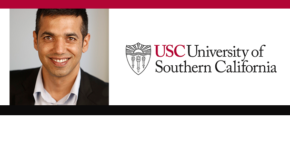
Los Angeles, CA
USC Schaeffer
Photo by: Steve Cohn
www.stevecohnphotography.com
(310) 277-2054
© 2014
Why is a simple treatment not reaching children who need it?
Neeraj Sood, professor in the Price School of Public Policy at the University of Southern California, explores this preventable problem.
Neeraj is a professor at the USC Price School of Public Policy with joint appointments at the USC Keck School of Medicine and USC Marshall School of Business. He is a senior fellow at the USC Schaeffer Center whose research focuses on economic epidemiology, infectious diseases, pharmaceutical markets, health insurance, economics of innovation, and global health.
Why a Simple Treatment Isn’t Reaching Children Who Need It
Every year, nearly half a million children lose their lives to diarrhea globally—a tragedy that is largely preventable with a low-cost and widely available treatment known as oral rehydration salts, or ORS.
Most providers in developing countries know that ORS is highly effective at treating diarrhea, yet few prescribe it. We wanted to find out why.
We looked at three leading explanations why doctors might not recommend ORS in India, which has the most cases of child diarrhea in the world.
The first explanation was that ORS is out of stock because it is less profitable than other treatments, like antibiotics. The next explores whether doctors have financial incentives and earn more by prescribing antibiotics, even though it is ineffective for viral diarrhea. Lastly, we wanted to look at patient preferences, specifically whether doctors assume patients don’t want ORS.
We recruited over 2,000 providers in India and trained actors to pose as parents seeking treatment for their child’s diarrhea. These actors randomly expressed a preference for ORS, antibiotics, or no preference. Some indicated purchasing medicine elsewhere to control for financial motives. Half the participating towns received a guaranteed ORS supply to test stockout effects.
Surprisingly, provider perception of patient preference for antibiotics was the biggest culprit, contributing to 42% of underprescription. Stockouts and financial incentives played a minor role at 6% and 5%, respectively.
When patients expressed a preference for ORS, prescription rates soared by 27 percentage points. This impact was significantly greater than eliminating stockouts or removing financial incentives.
Clear communication between patients and doctors is key to boosting ORS use and saving lives. When patients actively share their preference for ORS, its use increases significantly.
These results can be used to inform interventions that address provider misperceptions and empower patients to express their preferences.
Read More:
[USC Today] – This Common Medication Could Save Half a Million Children’s Lives Each Year, So Why Is It Underprescribed?
[Science] – What drives poor quality of care for child diarrhea? Experimental evidence from India
